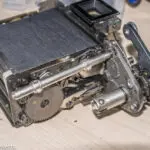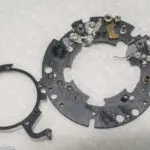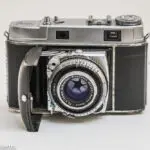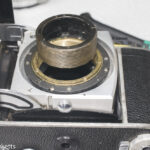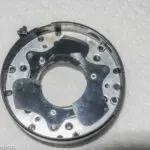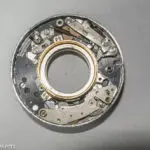The Kodak 35 rangefinder was released by Kodak in 1940 as a modification to another camera from their range, the Kodak 35. Although it is common for manufacturers to issue updates and modifications to their products, the Kodak 35 rangefinder looks a bit like a modification made by Dr Frankenstein, with the rangefinder simply bolted to the front of the camera rather than being engineered to fit inside. As a result, the unit looks, frankly, weird.
My Kodak 35 Rangefinder camera
As with the vast majority of my camera collection, the Kodak 35 Rangefinder was purchased from eBay. This purchase was slightly different from my normal pattern however, because instead of buying a camera from a house clearance or someone dealing with a relative's possessions after they had passed, this camera was purchased from a fellow camera collector (although not one known to me).
When it came close to the end of the auction no-one else seemed interested, so I got the camera with a single bid, and the seller packaged it up and sent it to me a couple of days later.
My initial assessment was that the unit seems in good physical condition with no real damage or marks, although it needs a clean to remove the sort of ingrained dirt you would expect for a camera that was made in 1940.
Mechanically, the camera seems to have some issues with the shutter speeds because the slower speeds are sometimes very fast as if the slow speed timer is not engaged. That probably means I'll be taking the unit apart to fix that issue, so hopefully I'll be able to find some information about how to do that. I also found that the mechanism that cocks the shutter takes a lot of force to make it move (the shutter is cocked by the film sprockets as the film is wound on) so that may also need some attention.
Overall then, an odd looking but still welcome addition to my Kodak collection.
Pictures of the Kodak 35 Rangefinder Camera.
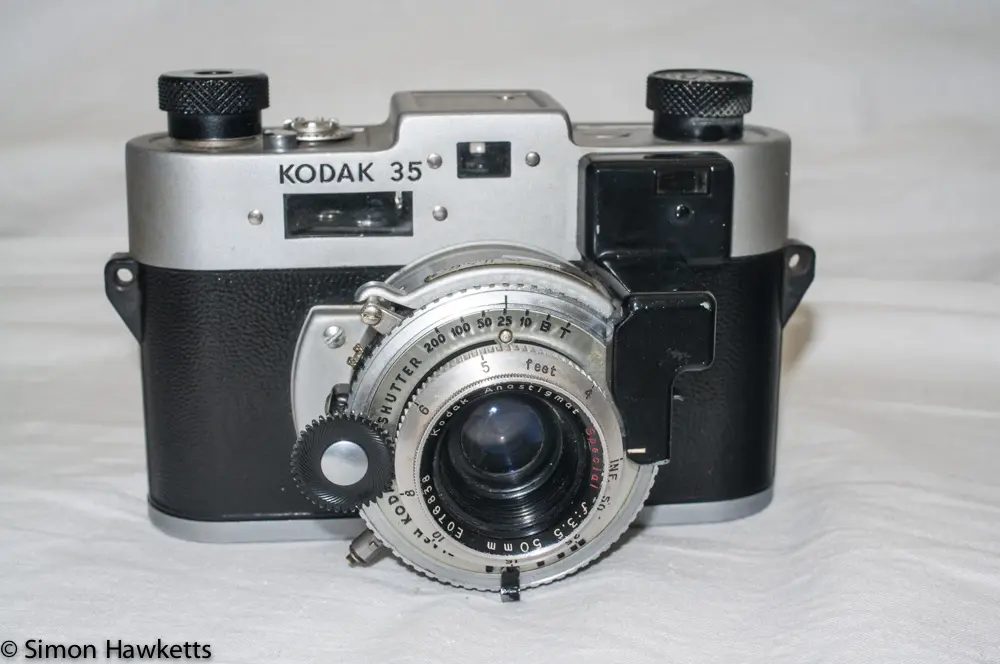

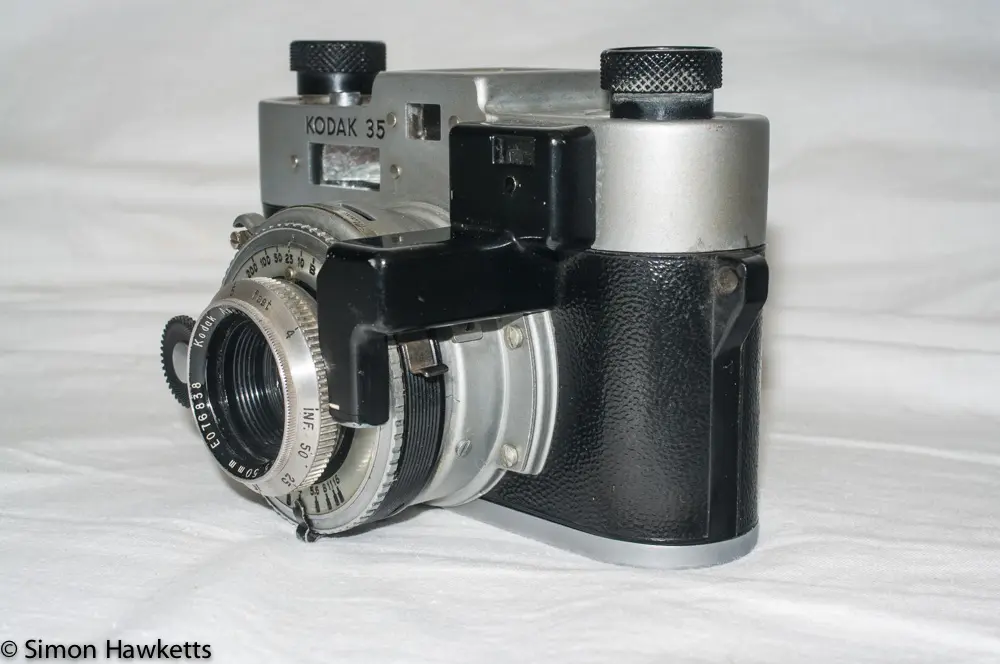
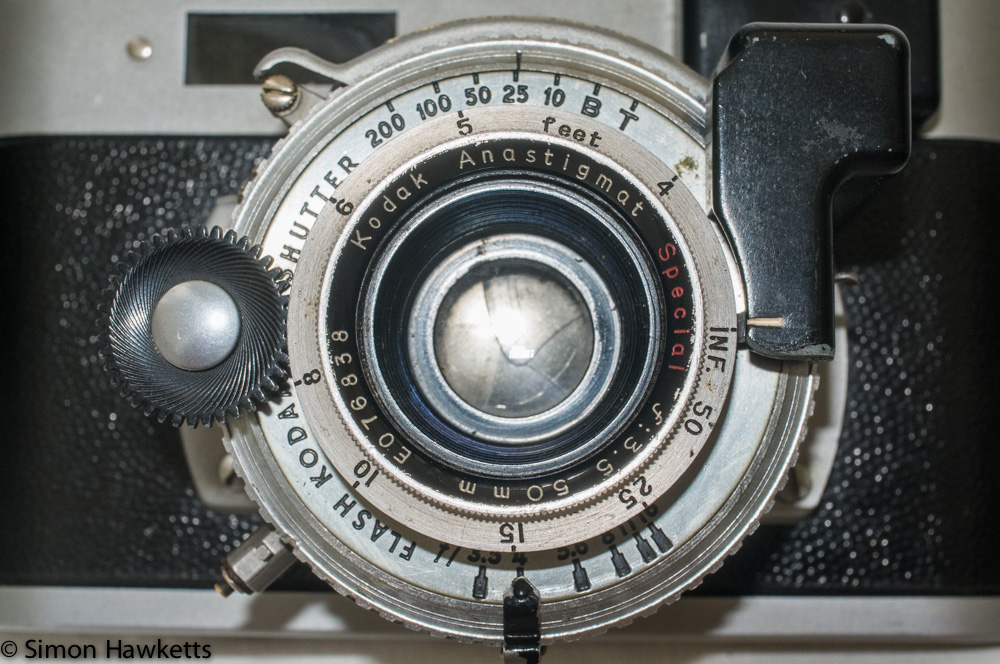
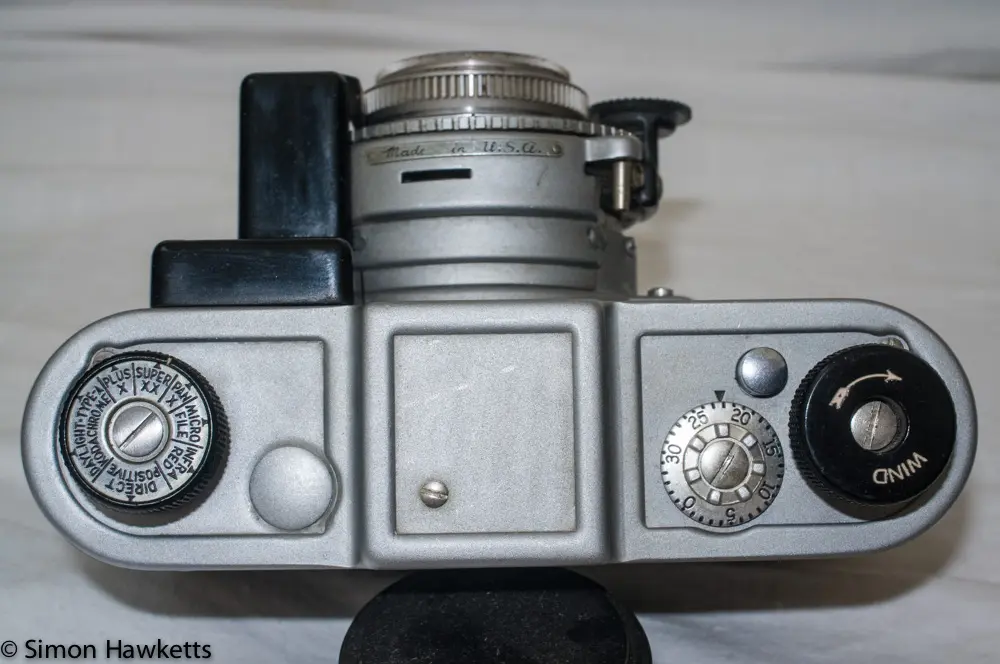
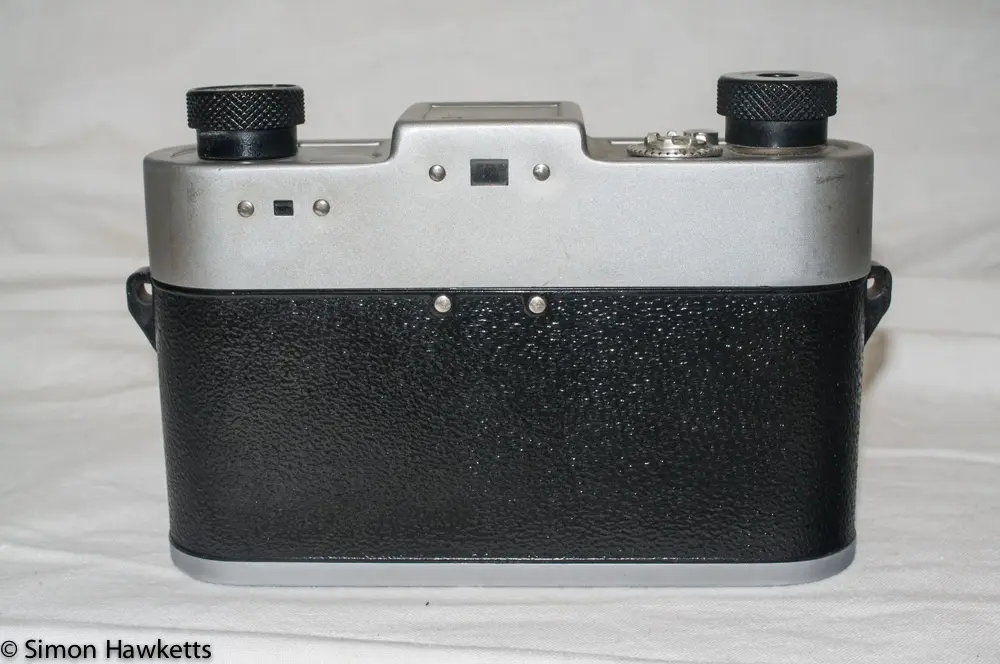
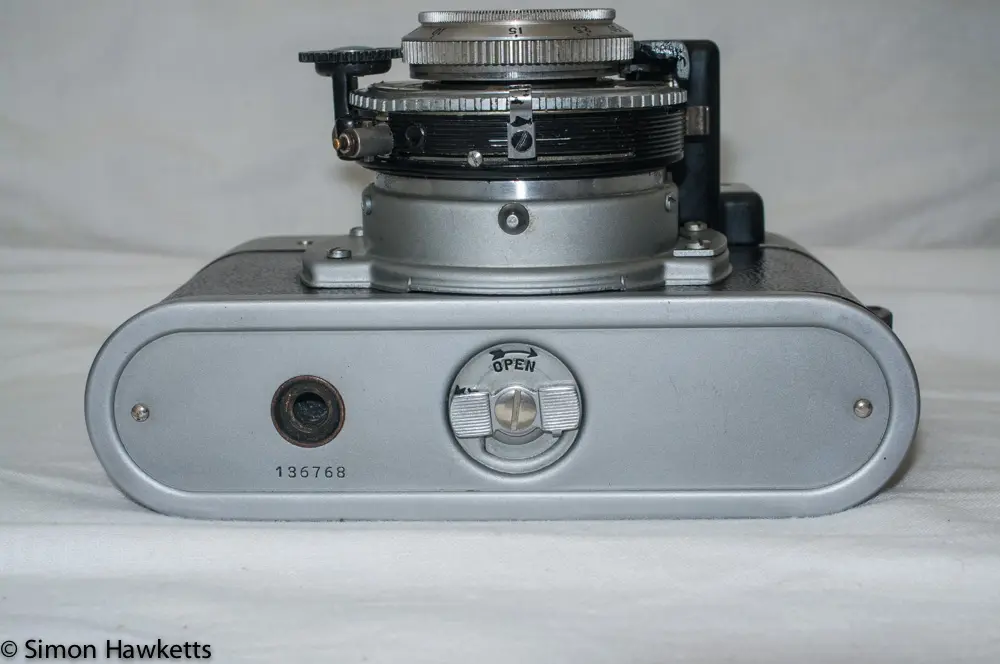
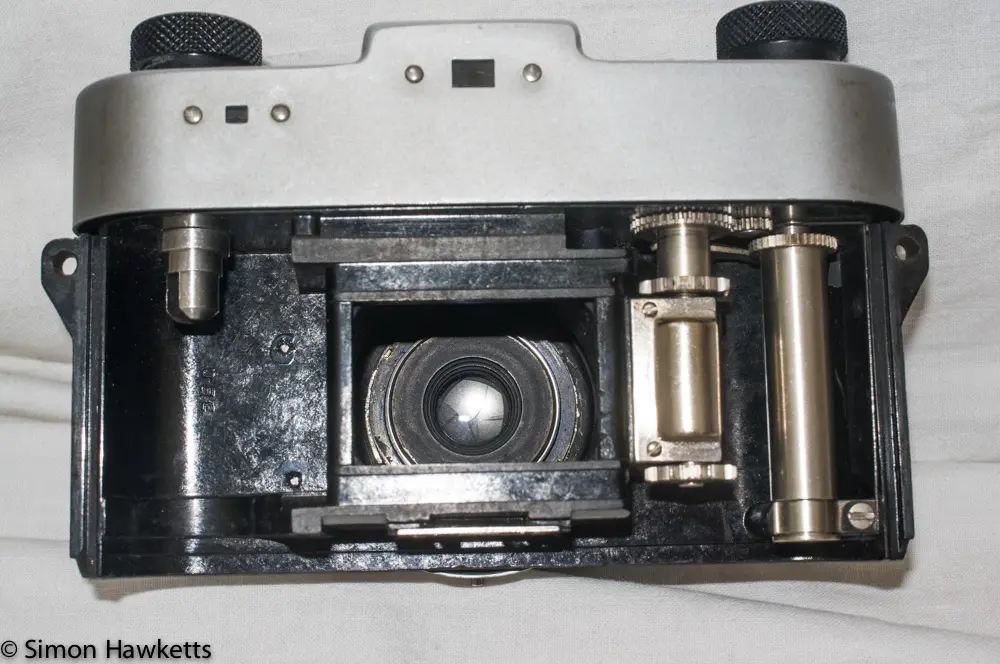
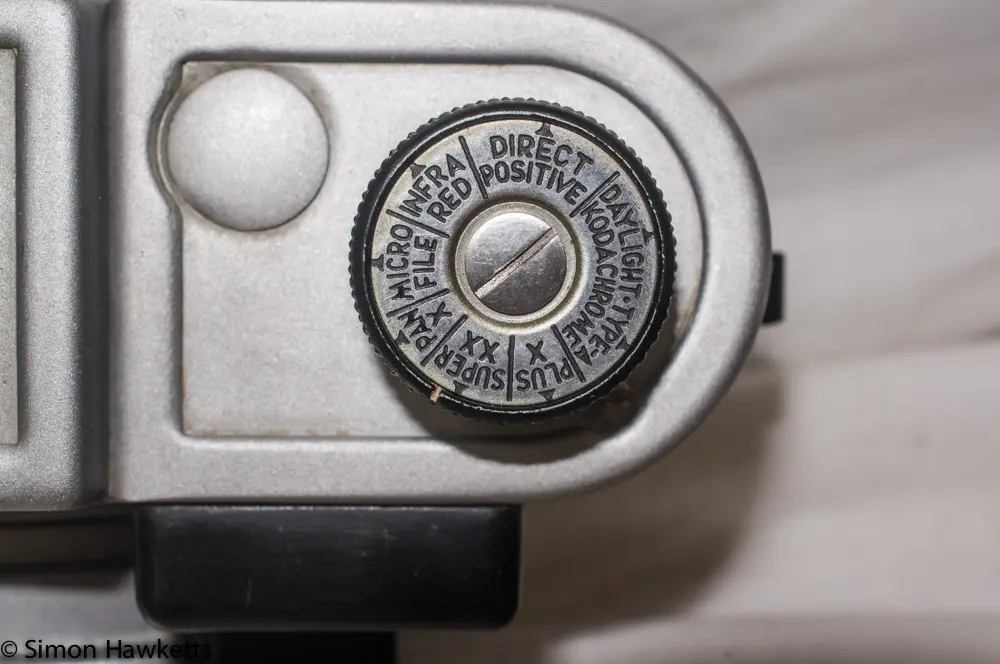
Kodak 35 Rangefinder description
I said at the start of this piece that the camera looks as if Kodak just bolted the rangefinder unit on to the existing Kodak 35 camera, but that isn't really an accurate description of what they did. The original Kodak 35 had a different top cover design with a collapsible viewfinder, so in fact Kodak engineered a new top cover for the rangefinder model incorporating the viewfinder and rangefinder mechanism, as well as adding the external cover at the front.
In fact, it looks as though the very obvious black cover from the viewfinder window to the front lens doesn't actually have any connection to the focus mechanism at all. Now I may be wrong in this (logically there must be something under the cover which is coupling the focus control to the rangefinder) and I haven't yet removed it, but looking with an eyeglass I can't see any connection, so there may be more extensive changes under the cover to transfer the lens position to the rangefinder mirror.
Whatever the truth of this, the fact is that Kodak added the rangefinder to a camera it already had in production, and the way of doing it makes the camera look - shall we be charitable and say - odd.
The Rangefinder
Now to the rangefinder itself.
I guess I should clarify for anyone reading this that isn't aware of the function of a rangefinder, it is a focus aid that's used to accurately measure the distance from the camera to the subject and therefore set the camera focus. The unit Kodak fitted to the 35 model is somewhat different from the norm in a couple of ways.
For a start, the rangefinder is a separate window from the viewfinder. It's normal in cameras with this style focusing aid, that the rangefinder view is presented in the central portion of the viewfinder - normally in a different colour - so that as you compose the picture, you can also focus the scene by aligning the two images (one in say yellow and one in normal view) in the centre of the view. With this camera you need to focus the camera by looking through a separate, very small window (and it is tiny) which is on the left side of the camera.
The other difference is that the view offered is a completely split view across the centre of the rangefinder image horizontally. As I said above, it's normal for the view to be two images superimposed, but this split view is quite difficult to use for some subjects. For example, a portrait of a person is quite easy to focus because you can line up the top half to the bottom half, but a landscape, or worse a seascape, would be very difficult1.
In my particular example, the rangefinder is quite difficult to use because the central split does not match vertically and there is a solid black line between the two images, but I suspect this is probably a maladjustment that I can fix.
To actually set the focus, the very prominent wheel on the front of the camera is turned as the image through the rangefinder window is observed and when the top and bottom images align, the camera focus is set.
The Exposure system
To set the exposure for the picture, the camera has conventional settings for aperture and shutter speed, which are set using dials around the front lens.
I can't see any markings on the camera to suggest the shutter is made by one of the big shutter manufacturers, so I suspect this unit was made by Kodak themselves. As further evidence of this, it does have written on it 'FLASH KODAMATIC SHUTTER', although this is somewhat obscured by the focus adjustment wheel.
There is no form of exposure meter built into the camera, so the photographer would need to either use an add-on meter to measure the light levels, use the chart on the side of the film box which showed typical settings based on weather conditions, or rely on their own experience to determine what settings to use when taking a picture.
Once decided, the camera has a reasonable range of settings from f/3.5 - f/16 and 1/200 sec - 1/10 sec. When you bear in mind that the range of film speeds available in the 1940s was quite low, that probably covers everything most photographers would need.
For occasions when there was very low light, or the photographer was inside, there is a post on the shutter for connecting a Flash attachment.
General Camera Description
The camera body is made of Bakelite, one of the very first forms of plastic, with a steel top and bottom. The construction is certainly pretty good, and the camera feels solid and dependable, although also quite heavy.

To open the camera and load it with film, the back and bottom can be removed by turning a lock on the base and pulling it down. With the back removed, the film can be loaded by adding the cassette to the post on the left and passing the film into a slot in the film advance post and turning the knob in the direction of the arrow.
The film is wound against its natural curl and as it passes over the short post with the sprocket holes it is responsible for cocking the shutter.
As I said earlier, my camera seems particularly stiff and feels as if it would tear the film, so I may need to look at this and see if anything needs to be lubricated.
On the top of the camera is a frame counter and a button which is used to release the locking mechanism that stops multiple exposures. It's pressed after each picture is taken to allow the next frame to be moved into position and the shutter cocked. As a nice feature, there is a little slot in the top of the lens which changes to a red colour when the camera is cocked and ready to take a picture.
Once all the film has been used, the winding knob is raised, which disengages it from the film advance mechanism, and the film can be wound back into its cassette using the rewind knob.
Kodak 35 Rangefinder Specifications
- Kodak 35 Rangefinder introduced by Kodak in 1940
- Takes 35 mm film
- Coupled rangefinder to assist with focus
- Frame counter next to the wind knob
- Film type reminder on the rewind knob
- Kodak shutter with 1/200, 1/100, 1/50, 1/25, 1/10 + bulb and time exposure
- Kodak "Anastigmat Special" 50mm f/3.5 lens
- Aperture range, f/3.5 to f/16
- F & M flash sync
- Cable release socket
- Solid construction
- Tripod bush on base
- Moulded lugs for a strap
- Lens Serial No: E076838
- Body Serial No: 136768
- Manual available on-line.
My assessment of the Kodak 35 Rangefinder camera
The Kodak 35 Rangefinder is a strange looking camera, although it may have looked less so at the time it was introduced and compared to the original Kodak 35. We look at it today with the benefit of hindsight, and by comparison with many other examples, so it's possibly difficult for us to make the same assessment that a 1940s buyer would.
I would say that the camera has some positive attributes:
- Solidly constructed of good quality materials
- It's difficult to take multiple exposures with the camera
- It uses a film type which lasts to this day
but there are also some areas where I find it difficult to use:
- The rangefinder window is so small that it's really difficult to use
- Quite heavy to carry about
As with all vintage cameras, it's difficult to form an assessment from so far away in history, and one large part of any assessment is the quality of the pictures produced, so when I've repaired the shutter and lubricated the mechanism, I'll try running a film through the camera and then update this post with the results.
- I suspect that this would be dealt with my turning the camera into portrait mode and focusing that way [↩]
